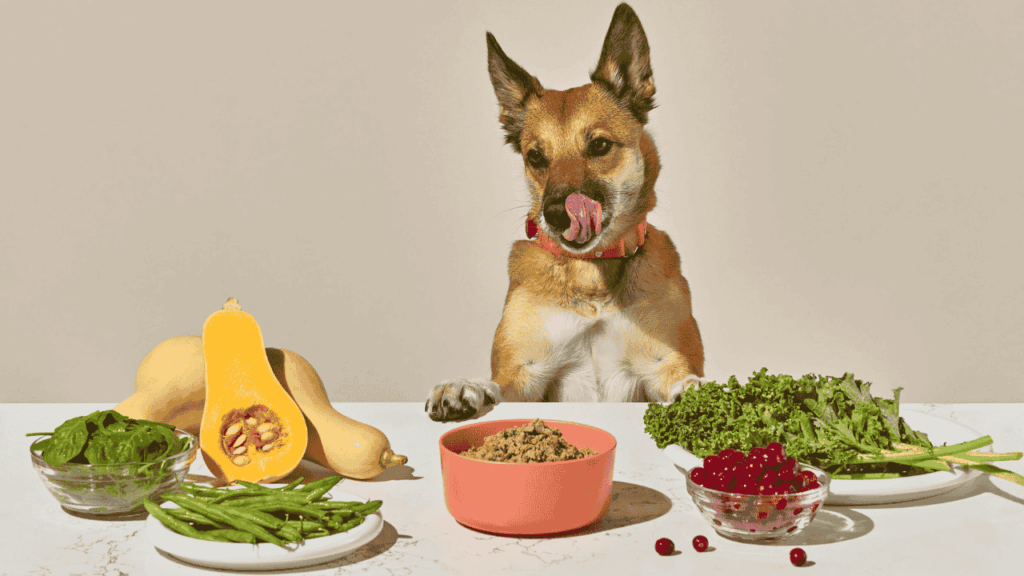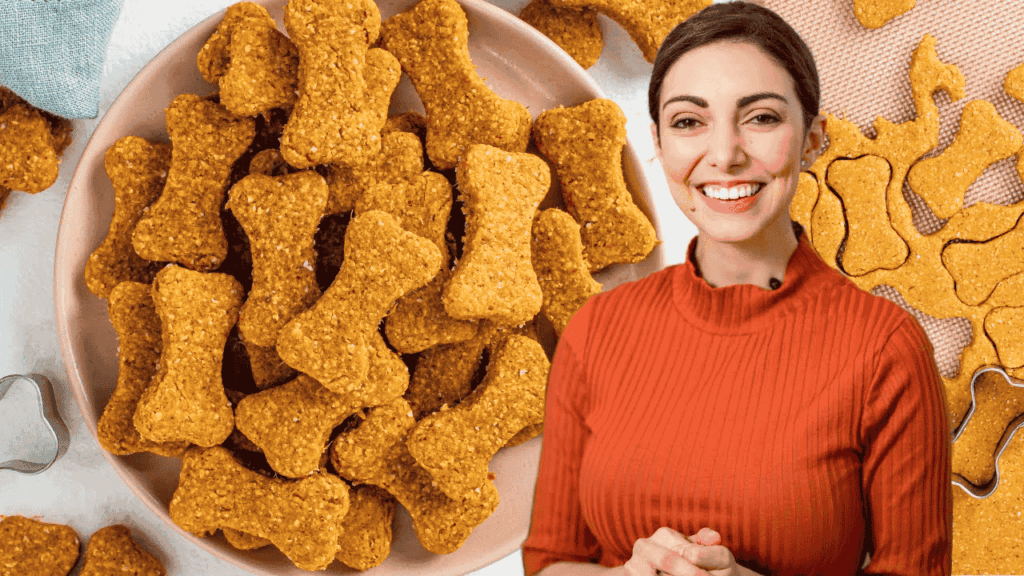In recent years, raw dog food has surged in popularity across the United States. Pet owners are increasingly seeking alternatives to conventional kibble, drawn by the idea of providing dogs with diets that more closely resemble what their ancestors might have eaten in the wild. Raw feeding emphasizes fresh, minimally processed ingredients such as raw meats, organs, vegetables, and sometimes fruits.
This trend reflects a broader shift in American pet care toward holistic wellness. Owners are not only focused on nutrition but also on their dog’s overall health, including digestion, skin and coat quality, energy levels, and immune function. Raw diets are seen as a way to support these aspects naturally, while also giving pet parents greater control over what their dogs consume.
What Raw Dog Food Includes
Raw dog food typically contains a combination of raw muscle meat, organ meat, bones, and fresh produce. Some formulations also include supplements like fish oil, probiotics, or vitamins to ensure a balanced diet. Unlike processed kibble, raw diets avoid artificial additives, preservatives, and fillers that can impact health.
Advocates highlight the nutrient density of raw feeding. Proteins, essential fatty acids, and naturally occurring vitamins and minerals are preserved through minimal processing. This approach aims to support better digestion, reduce allergies, improve dental health, and enhance vitality. Each ingredient is carefully chosen to mimic a natural diet while meeting modern nutritional standards.
Why Americans Are Switching to Raw
There are several reasons why raw dog food is gaining traction among U.S. pet owners. First, many are seeking healthier alternatives to processed pet foods, which can contain low-quality ingredients or by-products. Second, owners are influenced by a growing awareness of holistic pet care and the benefits of natural nutrition.
Raw feeding also offers the opportunity for owners to customize meals according to their dog’s specific needs, such as age, activity level, and health concerns. Some owners report improvements in coat shine, energy levels, stool quality, and even reductions in allergies or gastrointestinal issues. This hands-on approach empowers pet parents to actively manage their dog’s health rather than relying solely on commercial formulations.
Health Benefits of Raw Diets
Raw dog food is often associated with several health advantages. A high-protein, minimally processed diet supports lean muscle development and maintains healthy weight. Natural enzymes in raw foods can aid digestion and promote gut health. The inclusion of raw bones, when properly prepared, can contribute to dental hygiene by reducing plaque and tartar buildup.
Omega fatty acids from meats and fish are absorbed more efficiently in raw diets, supporting skin, coat, and joint health. Additionally, raw diets avoid certain carbohydrates and fillers found in kibble that can trigger inflammation or allergies in sensitive dogs. Owners often note increased vitality, stronger immune function, and improved overall well-being in dogs fed raw diets consistently.
Addressing Safety Concerns
While raw feeding offers many benefits, safety is a critical consideration. Raw meats can carry bacteria such as Salmonella or E. coli, which can affect both pets and humans. Proper sourcing, handling, and storage of raw ingredients are essential to reduce risk. Many pet owners turn to commercially prepared raw diets that undergo safety testing and are packaged to maintain freshness.
Introducing raw food gradually can help dogs adjust without digestive upset. Owners are encouraged to consult with veterinarians or pet nutrition experts to ensure that meals are balanced and appropriate for the dog’s size, age, and health status. Safe preparation, portion control, and hygiene are key components of a successful raw feeding routine.
Different Approaches to Raw Feeding
Raw feeding can take several forms. The most common is commercially prepared raw food, which is pre-portioned, balanced, and often frozen or freeze-dried. Another approach is the BARF (Biologically Appropriate Raw Food) diet, which combines raw meat, bones, and fresh produce, often supplemented with vitamins. Some pet parents prefer to prepare homemade raw meals, tailoring ingredients to their dog’s preferences and health needs.
Each method has advantages and challenges. Commercial options provide convenience, nutritional balance, and food safety, while homemade diets allow greater customization and transparency of ingredients. Owners should evaluate their lifestyle, time availability, and comfort with food preparation when selecting a raw feeding approach.
Integrating Raw Feeding into Holistic Care
Raw feeding aligns with the holistic wellness trend in pet care, which emphasizes physical, mental, and emotional health. Balanced nutrition forms the foundation, while regular exercise, socialization, and preventive healthcare complement the diet. Smart feeding tools, such as automated feeders and portion control devices, can simplify meal management and support consistent feeding schedules.
Owners who integrate raw diets with other wellness practices, such as regular veterinary check-ups, joint supplements, and mental enrichment, create a comprehensive care routine. This approach enhances overall vitality, supports healthy aging, and strengthens the bond between dog and owner.
Observed Improvements in Dogs
Many pet parents report noticeable differences after transitioning to raw diets. Dogs often exhibit shinier coats, reduced shedding, increased energy, and improved stool consistency. Allergic reactions or digestive sensitivities sometimes decrease when dogs are removed from processed diets containing artificial additives or grains.
While individual results vary, these observations contribute to the growing popularity of raw feeding in America. Testimonials from owners, combined with emerging research on canine nutrition, reinforce the perception that raw diets can provide tangible health benefits when implemented responsibly.
Choosing the Right Raw Diet
Selecting a raw diet requires careful consideration of nutritional balance, ingredient quality, and safety. Pet parents should look for reputable brands, review nutritional content, and consult with veterinarians. For homemade diets, guidance from canine nutrition experts ensures meals meet all essential requirements.
Transitioning gradually from processed food to raw diets can prevent digestive upset. Monitoring the dog’s response and adjusting portions according to activity level, weight, and health ensures optimal results. Attention to hygiene, freezer storage, and portioning contributes to a safe and effective feeding routine.
Future of Raw Dog Food in America
As awareness of canine nutrition and holistic wellness grows, raw dog food is likely to continue its upward trend. Innovations in preparation, packaging, and safety standards make raw feeding more accessible and convenient. Pet owners increasingly view raw diets as part of a complete wellness lifestyle rather than a niche or experimental approach.
Advancements in nutritionally balanced formulas, combined with ongoing research into canine dietary needs, support the mainstream adoption of raw feeding. Raw dog food now represents not just a diet, but a philosophy of intentional, health-focused pet care.
Embracing Raw Feeding for Holistic Wellness
Raw dog food offers pet parents a way to actively participate in their dog’s health. When implemented safely and thoughtfully, it supports physical fitness, mental well-being, and social engagement. Integrating raw feeding with exercise, preventive care, and enrichment activities creates a comprehensive wellness plan that enhances quality of life for dogs and strengthens the human-animal bond.
As more Americans recognize the benefits of fresh, natural diets, raw dog food is shaping the future of canine nutrition. It provides a bridge between traditional feeding practices and holistic wellness trends, ensuring that dogs receive both the nutrients and enrichment they need to thrive.







